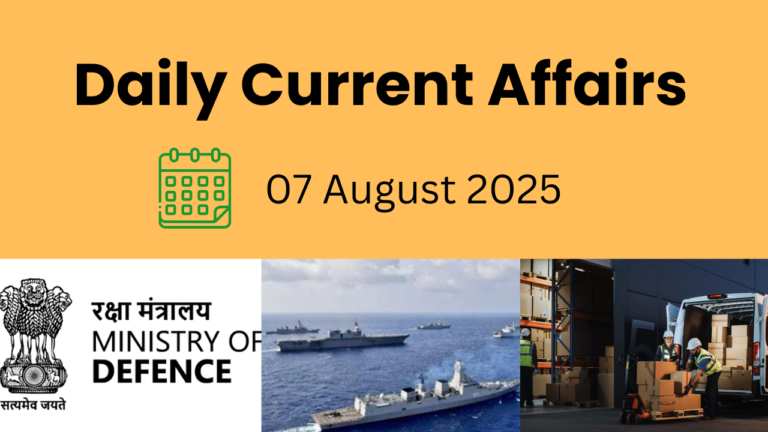1. Brain-Computer Interface (BCI): Restoring Movement for the Paralysed
Context: In a groundbreaking advancement, researchers at the University of California have developed a new Brain-Computer Interface (BCI) that allows people with paralysis to regain movement using robotic limbs—bridging brain signals directly to external devices.
What is a Brain-Computer Interface?
A Brain-Computer Interface (BCI) is a system that creates a direct communication link between the brain’s electrical activity and an external device—bypassing the body’s damaged motor pathways.
- Purpose: To assist, augment, or restore sensory-motor and cognitive functions.
- In this breakthrough, the BCI decodes signals from the brain’s motor cortex using Artificial Intelligence (AI) to control robotic limbs.
Types of Brain-Computer Interfaces:
1. Invasive BCI:
- Implanted directly into the brain tissue.
- Provides highly accurate signals.
- Used in severe cases like paralysis or locked-in syndrome.
- Example: Neuralink’s Blindsight, which explores restoring vision and movement.
2. Partially Invasive BCI:
- Placed within the skull but outside the brain tissue, typically on the dura mater.
- Uses techniques like electrocorticography (ECoG) to record signals.
- Offers a balance between signal quality and risk.
3. Non-Invasive BCI:
- Requires no surgery; uses external sensors like EEG electrodes.
- More accessible and safer, but less precise.
- Ideal for general use in assistive technologies and education.
Applications of BCI Technology:
Medical & Rehabilitation:
- Assistive Devices: Let users control wheelchairs, robotic arms, or computers with their minds.
- Neurorehabilitation: Stimulates brain areas post-stroke to regain motor control.
- Prosthetics: Enables brain-operated artificial limbs.
Education & Training:
- Attention Monitoring: Helps track student engagement in classrooms.
- Skill Learning: Offers real-time feedback on brain activity during learning or simulations.
Industry & Automation:
- Human-Robot Collaboration: Enhances efficiency and safety in automated environments.
- Hands-Free Operation: Beneficial in hazardous jobs like mining or chemical processing.
Ethical and Practical Concerns:
1. Privacy Risks:
- Neural data may contain sensitive thoughts, emotions, or intentions.
- Raises fears of data misuse and mental surveillance.
2. Digital Divide:
- Advanced BCIs are expensive and technically complex, risking exclusion of marginalized groups.
3. Mental Autonomy:
- Long-term BCI use could alter brain function or affect a person’s sense of agency, leading to questions about identity and autonomy.
The Way Ahead:
- Affordable Innovation: Focus on developing low-cost, scalable BCI systems for widespread adoption.
- Collaborative Ecosystem: Foster public-private partnerships and startup-driven solutions.
- Workforce Development: Establish education programs and certifications to train specialists in BCI design, ethics, and deployment.
2. Enhancing Competitiveness of MSMEs in India
Context: The NITI Aayog, in partnership with the Institute for Competitiveness (IFC), has released a pivotal report aimed at strengthening the Micro, Small, and Medium Enterprises (MSMEs) sector in India—focusing on reforms to unlock its full potential.
About the Report:
- Prepared By: NITI Aayog & Institute for Competitiveness.
- Objective: To drive systemic reforms in financing, skilling, innovation, and market access to enhance MSME competitiveness.
- Sectoral Focus: Textiles, Chemicals, Automotive, Food Processing, among others.
- The report outlines policy interventions to improve India’s position in the global value chain through MSME transformation.
India’s MSME Sector at a Glance:
- Home to 5.93 crore registered MSMEs, employing over 25 crore people.
- In 2023–24, MSME-related goods made up 45.73% of India’s total exports.
- Contribution to Gross Value Added (GVA) has steadily risen:
- 27.3% in 2020–21
- 29.6% in 2021–22
- 30.1% in 2022–23
Recent Policy Support:
- Union Budget 2025–26 includes:
- Enhanced credit access
- Support for first-time entrepreneurs
- Promotion of labour-intensive industries
- Revised Classification Criteria:
- Investment limits increased by 2.5x,
- Turnover limits doubled -Aimed at boosting scale, technology adoption, and job creation.
Challenges Identified in the Report:
Financing Gaps:
- MSME access to formal credit rose (2020–24):
- Micro & Small: From 14% to 20%
- Medium: From 4% to 9%
- Still, about 81% of credit demand remains unmet, with a funding gap of 80 lakh crore.
- CGTMSE (Credit Guarantee Fund) has scaled up but still falls short in addressing deep credit deficits.
Skilling and Human Capital:
- Many MSME workers lack formal training, hindering productivity, scalability, and quality standards.
Innovation & Technology Adoption:
- Low investment in R&D, product innovation, and quality certifications.
- Barriers include:
- High costs
- Weak internet and electricity infrastructure
- Lack of awareness of state tech-support schemes
Policy Awareness Deficit: Existing MSME policies suffer from low awareness and ineffective implementation, especially at the state and district levels.
Recommendations & Way Forward:
1. Targeted Interventions:
- Focus on cluster-based MSME development tailored to regional strengths (e.g., textiles in Tamil Nadu, food processing in Bihar).
2. Strengthening Market Access:
- Training in digital marketing
- Partnerships with logistics and supply chain firms
- Creation of platforms for direct B2B and B2C linkages, especially in the Northeast and Eastern India
3. State-Level Reforms:
- Develop adaptive policy frameworks that:
- Promote innovation
- Enhance competitiveness
- Support inclusive and green growth
4. Institutional Collaboration:
- Stronger coordination between:
- Central and state governments
- Financial institutions
- Academic and research bodies
Private sector partners
3. Terror Financing: A Global Security Threat
Context: India has intensified its crackdown on terror financing, urging global financial institutions such as the IMF, World Bank, and ADB to ensure that developmental aid is not misused—particularly in countries like Pakistan. India also advocates for Pakistan’s re-listing on the FATF Grey List, citing the need for strict monitoring of its financial ecosystem.
What is Terror Financing?
Terror financing refers to the provision of funds—from either legitimate or illegitimate sources—to support terrorist individuals or organizations. These funds are used to:
- Recruit operatives
- Procure weapons
- Plan and execute terror attacks
- Sustain organizational infrastructure
Major Sources of Terror Financing:
| Source | Description |
| Hawala Transactions | Informal money transfer systems that evade formal banking channels, making funds hard to trace. |
| Fake Currency | Counterfeit notes circulated to destabilize economies and fund illegal activities. |
| Drug Trafficking | Illicit narcotics trade is a major source of income for terror outfits. |
| Extortion & Kidnappings | Hostage-taking and extortion from businesses/individuals for ransom. |
| Misused NGOs/Charities | Front organizations collect donations under false pretenses and redirect them to terror groups. |
Challenges in Combating Terror Financing:
- Complex Financial Webs: Use of shell companies, front businesses, and underground networks.
- Weak Global Coordination: Poor intelligence sharing and uneven enforcement.
- Regulatory Gaps: Disparity in laws and enforcement levels across jurisdictions.
- Technology Misuse: Cryptocurrencies and encrypted payment platforms offer anonymity, making tracing difficult.
India’s Multi-Pronged Response:
Legislative Framework:
- Unlawful Activities (Prevention) Act (UAPA):
- Allows designation of individuals/entities as terrorists.
- Enables seizure of assets and bank accounts.
- Prevention of Money Laundering Act (PMLA):
- Targets financial crimes and enables confiscation of laundered property.
Institutional Mechanisms:
- Financial Intelligence Unit (FIU-IND): Tracks suspicious transactions and shares intelligence with agencies.
- National Investigation Agency (NIA): Specializes in counter-terrorism investigations and financial linkages.
International Collaboration:
- Participation in the Financial Action Task Force (FATF)
- Hosting and joining platforms like No Money for Terror (NMFT) to build global consensus and enforcement mechanisms.
Technology Integration:
- NATGRID (National Intelligence Grid): Integrates data from multiple sources for real-time intelligence sharing.
Data Analytics & AI tools to trace unusual transaction patterns and financial anomalies.
Way Forward:
- Strengthen cross-border coordination to shut down terror funding routes.
- Enhance financial literacy and awareness among law enforcement and banking institutions.
- Develop robust regulation of cryptocurrencies and digital payment platforms.
- Promote public-private partnerships for proactive threat identification and counteraction.
4. Place in News: Chile
Context: A powerful 7.4 magnitude earthquake recently struck southern Chile, prompting a tsunami alert across coastal regions. Chile, located in the Pacific Ring of Fire, frequently experiences intense seismic activity, including earthquakes, volcanic eruptions, and tsunamis.
Political and Geographical Overview:
Location:
Chile lies along the western edge of South America, stretching over 4,300 km from north to south, making it one of the longest countries in the world.
Boundaries:
- North: Bordered by Peru and Bolivia
- East: Shares its longest border with Argentina
- The Argentina–Chile border is the longest in South America and the third longest globally, after:
- Canada–USA
- Russia–Kazakhstan
- The Argentina–Chile border is the longest in South America and the third longest globally, after:
- West: Flanked by the vast Pacific Ocean
Geographical Highlights:
- Andes Mountains dominate the eastern spine of the country.
- Atacama Desert in the north is the driest non-polar desert in the world, receiving less than 1 mm of rain per year in some areas.
- Sits on the Pacific Ring of Fire, making it prone to:
- Volcanic eruptions
- Earthquakes
- Tsunamis
- Ojos del Salado:
- The highest active volcano on Earth, at 6,893 meters
- Also the second-highest peak in the Western Hemisphere
Economic Importance:
- Chile is the world’s largest producer of copper, a vital metal for:
- Electrical wiring
- Electronics
- Renewable energy infrastructure
- Located within the “Lithium Triangle” (with Bolivia and Argentina), containing:
- Over 50% of the world’s lithium reserves
- Crucial for electric vehicle batteries and clean energy tec
Did You Know?
- Chile was the first South American country to join the OECD (Organisation for Economic Co-operation and Development).
- The Valparaíso region is home to the oldest stock exchange in Latin America.
- Chile’s Naval Hydrographic and Oceanographic Service (SHOA) plays a key role in monitoring Pacific tsunami threats.
5. Turbidity Currents in Submarine Canyons: A Deep-Sea Phenomenon
Context: Turbidity currents are rapid, downslope flows of water filled with sediments, making the water denser and less transparent. These currents behave similarly to underwater avalanches, often triggered by geological disturbances such as:
- Earthquakes
- Submarine landslides
- Slope failures and other geological events
These currents can travel great distances across the seafloor, shaping underwater landscapes and playing a vital role in oceanic processes.
Key Characteristics of Turbidity Currents:
Turbidity currents are an essential part of deep-sea dynamics. As the water’s density increases due to suspended sediments, it becomes less transparent, often causing large-scale erosion of the seafloor. Key features include:
- Erosion and Canyon Formation: Turbidity currents actively carve out and enlarge submarine canyons, much like how rivers shape land canyons.
- Layered Sediment Deposition: These currents deposit sediments in graded layers, with coarser particles settling first, followed by finer sediments.
- Shaping the Ocean Floor: These flows contribute significantly to deep-sea sedimentation, sculpting the ocean’s topography over time.
Submarine Canyons: Nature’s Underwater Valleys:
Submarine canyons are narrow, steep-sided valleys that form on the continental slopes and rise. They can extend from the continental shelf down into the deep ocean, often carved by the erosive force of turbidity currents. Key aspects of submarine canyons include:
- Global Presence: There are approximately 9,477 known submarine canyons globally, covering almost 11% of the continental slope regions.
- Distinct Morphology: Canyons on active margins (tectonically active zones) are generally steeper and shorter, while those on passive margins (less tectonically active regions) tend to have more gradual slopes.
- Unstable Walls: The walls of these canyons are often nearly vertical, and their susceptibility to collapse adds further sediment to turbidity currents, increasing their destructive power.
Types of Submarine Canyons:
Submarine canyons come in different forms, each unique in its formation and function:
- Bank Canyons: These are flat-topped elevations along the continental margins, created through both erosional and depositional processes. A prominent example is Dogger Bank in the North Sea.
- Shoal Canyons: Shallow regions with accumulated sediments, typically found at depths of less than 10 meters during low tide. These are often hazardous to navigation.
- Reef Canyons: Composed of calcareous skeletons from corals and algae, these reefs are biodiversity hotspots, particularly in the Pacific Ocean. They are commonly found associated with guyots and seamounts.
Microplastic Transport and Submarine Canyons:
A recent study published in ACS Environmental Science & Technology highlighted a groundbreaking discovery: turbidity currents are now transporting microplastics into the deep sea, particularly through submarine canyons. This occurs even in regions that aren’t directly fed by rivers, such as the Whittard Canyon off the coast of Ireland. This finding underscores the growing environmental concerns of plastic pollution in deep-sea ecosystems and the role of submarine canyons as conduits for this pollution to reach even the most remote ocean depths.
Fun Fact: Submarine Canyons and Ecosystem Diversity
While submarine canyons are primarily known for their geological role, they are also critical ecosystem hotspots. The deep, nutrient-rich waters flowing through these canyons support diverse species of fish, invertebrates, and even whale populations that feed on abundant plankton and nutrients. Thus, submarine canyons serve not only as geologically dynamic structures but also as biodiversity reservoirs in the deep ocean.
In conclusion, turbidity currents and submarine canyons are key players in shaping the seafloor and influencing oceanic processes. They drive sedimentation, transport pollutants, and support marine ecosystems, making them critical to understanding the complex dynamics of our oceans.
6. Climate Change and the Shrinking Caspian Sea: A Looming Environmental Crisis
Context: The Caspian Sea, the world’s largest enclosed inland water body, is now at the frontline of climate change impacts. Once a vast expanse sustaining economies, biodiversity, and regional geopolitics, this tectonic lake is rapidly shrinking—primarily due to climate-driven evaporation.
Alarming Water Level Declines:
Even with efforts to curb global warming, scientists project that the Caspian Sea will drop by 5–10 meters by the end of the century. If temperatures rise unchecked, this decline could reach up to 21 meters by 2100. The consequences of such a dramatic fall are profound and far-reaching.
Biodiversity on the Brink:
The shrinking waters place endemic and endangered species at risk:
- Caspian Seal (Endangered – IUCN): The only marine mammal native to the region.
- Beluga Sturgeon (Critically Endangered): Known for producing prized caviar, this ancient fish faces habitat destruction.
As salinity increases and shorelines recede, these species lose critical breeding and feeding grounds, accelerating their decline.
Economic and Industrial Fallout:
The Caspian region’s economy—heavily reliant on ports and hydrocarbon industries—faces significant disruption:
- Ports at Risk: Major transport hubs like Baku, Anzali, Aktau, Turkmenbashi, and Lagan may become inland relics, severed from the sea.
- Volga River Threat: As the Caspian’s only maritime connection to the outside world, a decline in the Volga’s viability could isolate the region’s shipping network.
- Oil and Gas Production: Key offshore fields such as Kashagan (Kazakhstan) and Filanovsky (Russia) are at risk of being stranded, jeopardizing energy exports and national revenues.
Public Health and Environmental Disaster:
As the seabed dries:
- Toxic Dust Storms may emerge, releasing pollutants and salt into the air—reminiscent of the Aral Sea catastrophe.
- Communities near the coast face increased risks of respiratory illnesses, soil degradation, and water insecurity.
Geopolitical and Environmental Significance:
The Caspian Sea is bordered by five countries—Russia, Azerbaijan, Iran, Turkmenistan, and Kazakhstan—and is fed primarily by three rivers: the Volga, Ural, and Terek.
- It serves as a critical geopolitical hub, providing transit routes, energy corridors, and biodiversity resources.
- The retreat of its shoreline could fuel territorial disputes, impact fisheries, and strain regional cooperation.
Did You Know?
- The Caspian Sea is not a sea, but a lake—formed in a tectonic depression, isolated from the world’s oceans for millions of years.
- It’s a key wintering area for migratory birds, supporting one of the most unique brackish ecosystems in the world.
Conclusion: A Call for Urgent Action
The fate of the Caspian Sea is a stark reminder of how climate change transcends land, sea, and borders. Protecting this unique water body requires coordinated international action, adaptive water policies, and serious climate commitments—before it becomes another ecological tragedy in the pages of history.




